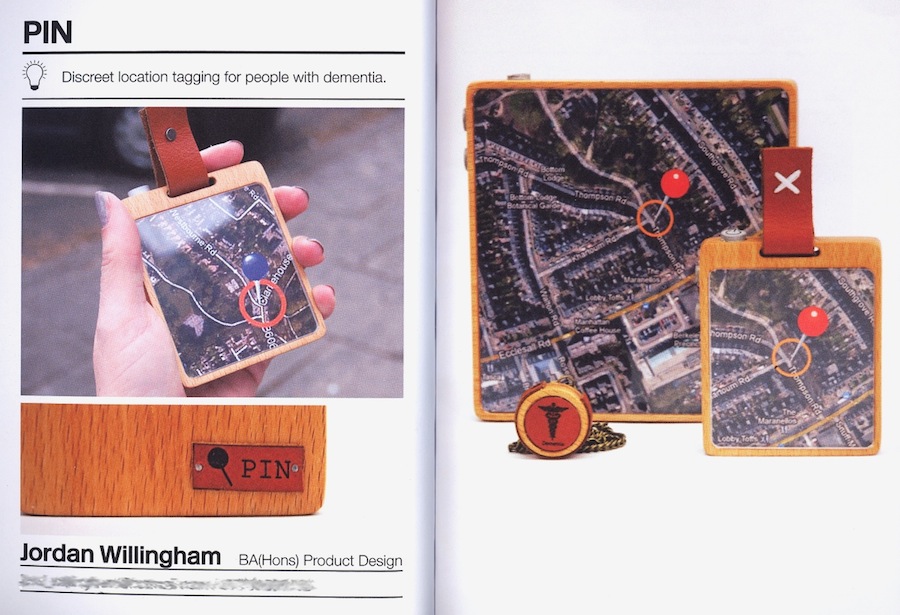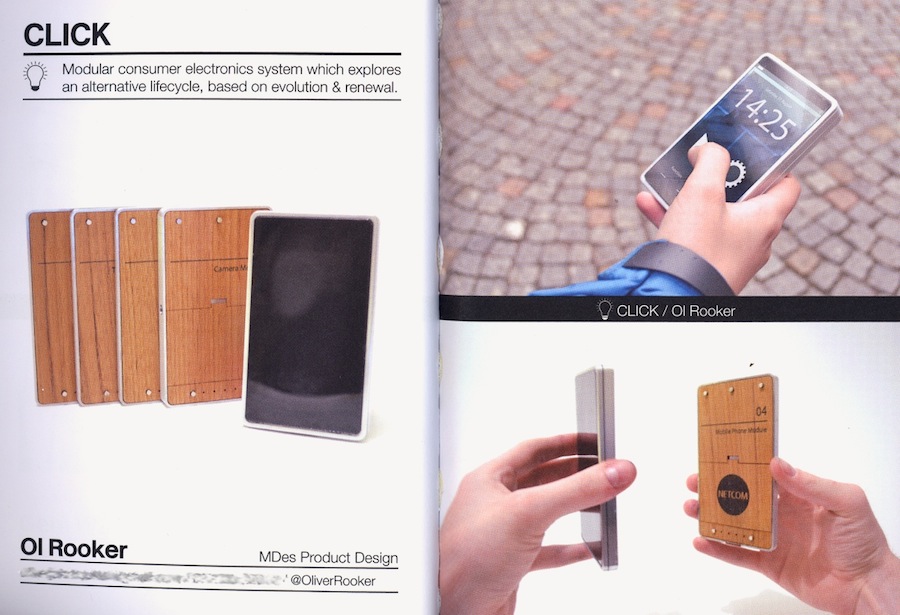On ideas.
In June I visited Sheffield Hallam University’s Creative Spark exhibitions and particularly enjoyed looking around the works of the Product Design students. There was a lot of smart thinking on display and several of the designs caught my attention, especially Samuel Carr’s Life Collection kitchen products and Peter Larkham’s Branch lighting system. It was an interesting event and provided a useful insight into how our young designers see the future1, but I thought little more of it until a few weeks later when i saw Tile:
I was immediately reminded of something i’d seen at Creative Spark – Pin by Jordan Willingham.

Clearly, these two products are not identical (and in more ways than the fact that Tile is nearing production whereas Pin is little more than a design) but the idea behind each is very similar and conceptually they work in much the same way. Had Pin not been developed with a focus on one particular purpose then I suspect Jordan may have arrived at a product even more similar to Tile.
More recently, the web seems to have become rather excited by Dave Hakkens’ PhoneBloks concept.
It is a very appealing idea but flawed and largely impractical in many ways, the chief of which was immediately highlighted by John Gruber:
“But even if Phonebloks works as advertised, you’d still be throwing out old components on a regular basis, and the march of progress is such that it won’t take long until your base board is outdated too.”
Which is exactly the same thought i’d had some months earlier when i saw Oliver Rooker’s Click concept at the Creative Spark exhibition.

Again, Click is not identical to PhoneBloks but it is clearly a result of the same train of thought. The ideas share the same pros and same cons. Furthermore, this idea itself isn’t particularly new – it’s the modular desktop PC concept that has been mulled for years and years (including by me) but applied to a smartphone. Isn’t it weird how these things occur to people apparently independently?
I’ve long found it peculiar how similar ideas or innovations crop up at around the same time. I guess the most famous examples of this would be Darwin and Wallace independently formulating theories of evolution, Bell and Gray separately applying for the patent of the telephone on the same day, or Edison and Tesla’s well-documented competition over the distribution of electricity2.
Are such events a result of two (or more) people having had very similar life/work experiences? The same inspirations? Have they simply studied the same academic texts? Absorbed the same body of knowledge? Are they subconsciously copying the someone else’s prior art? Or maybe just unashamedly stealing it? Could it be a complete coincidence? Or perhaps some combination of all of the above?
I doubt we can say for sure. And i doubt i’m the first to think this.
…
Update: Here’s an excellent piece on this subject by Malcolm Gladwell in The New Yorker from 2008. It’s quite long but a really interesting read.
…
Update #2: While this blog post sat in my Drafts folder, Motorola have gone and teamed up with Dave Hakkens (and community) to work together on the PhoneBloks idea. They’re calling it Project Ara. Colour me intrigued. (But probably still rather pessimistic.)
-
Modular. The future is definitely modular, according to the Creative Spark exhibition at least. Almost all of the product designs had some modular aspect. Or maybe modular-ism is an idea that permanently floats around design undergrads? Like chicken pox around toddlers, the wearing of baseball caps backwards around 10 year olds, and that feeling of having invented all things sexual around teenagers. ↩